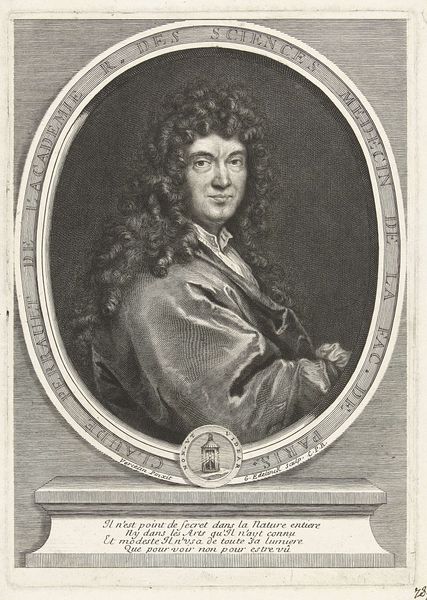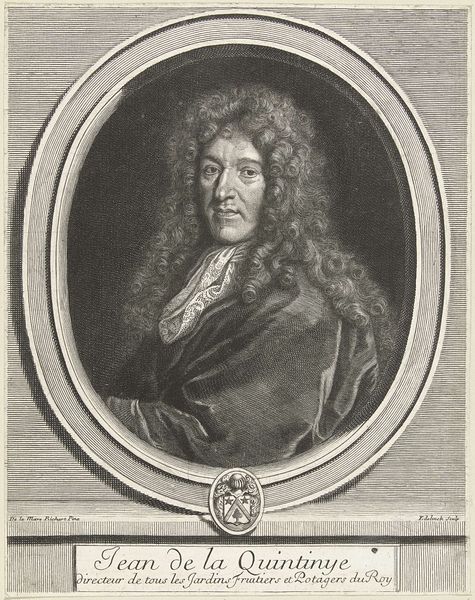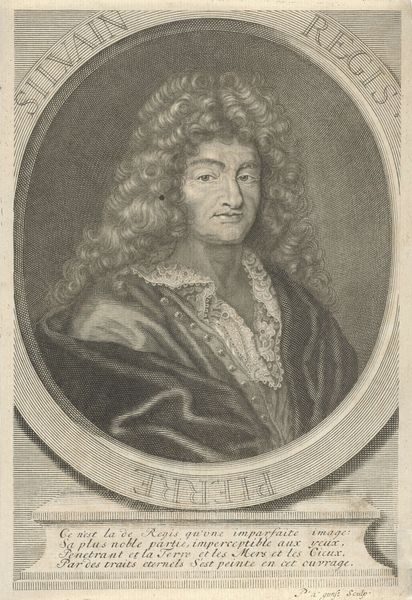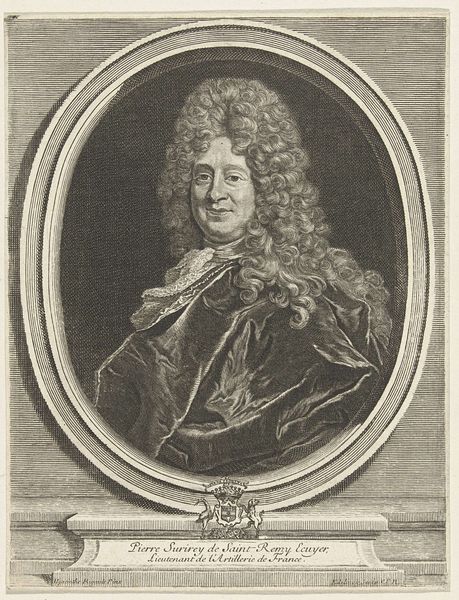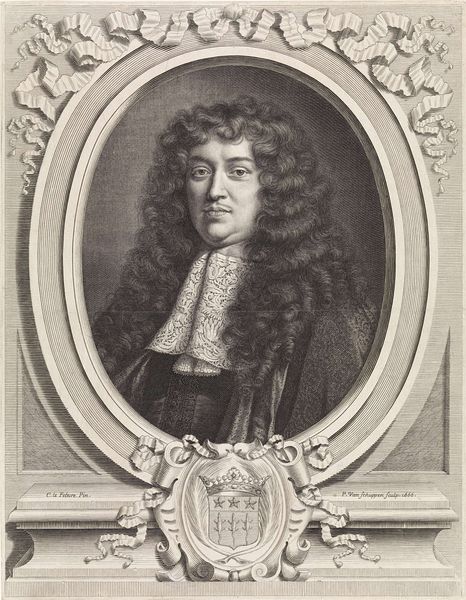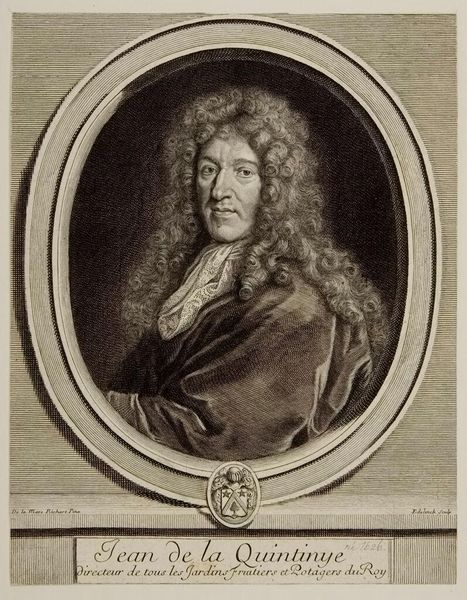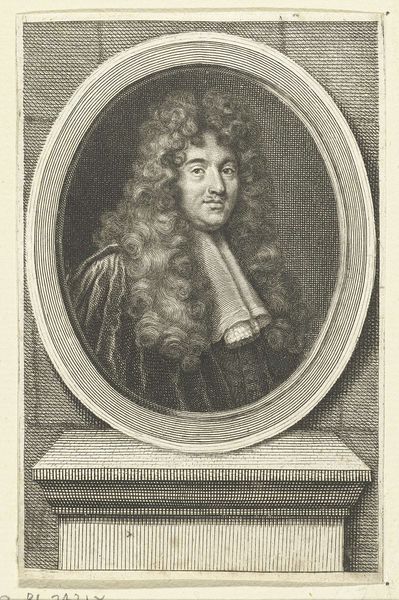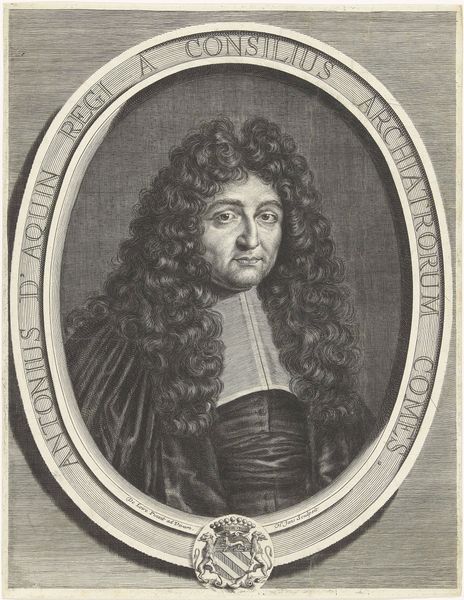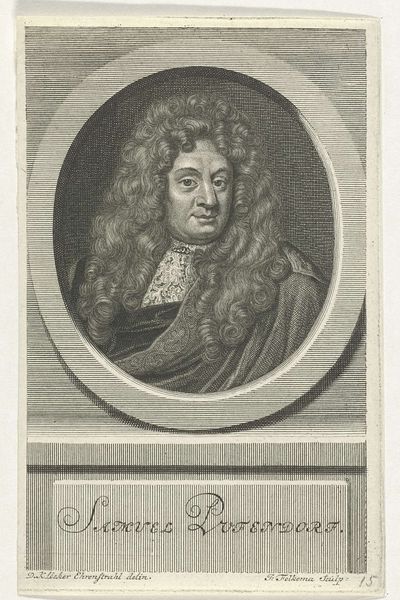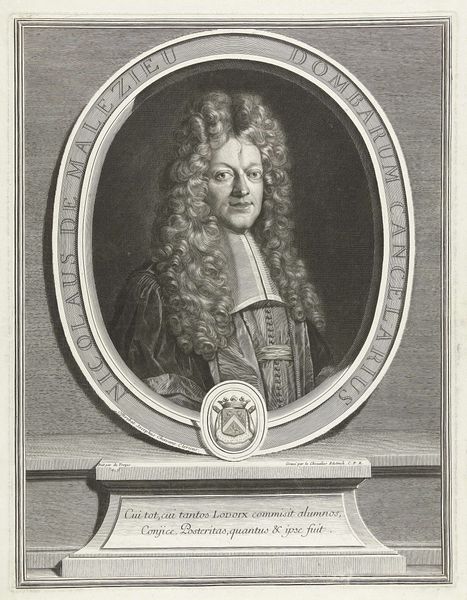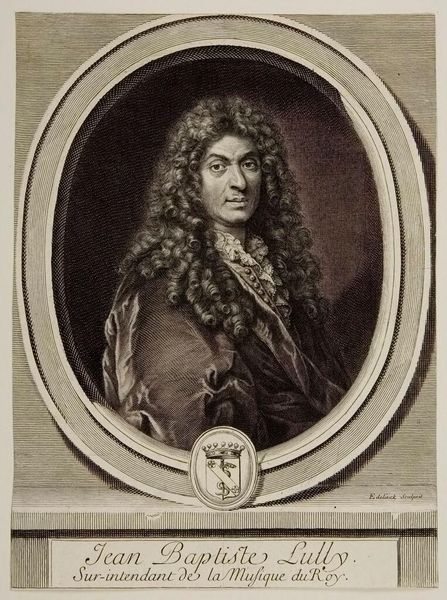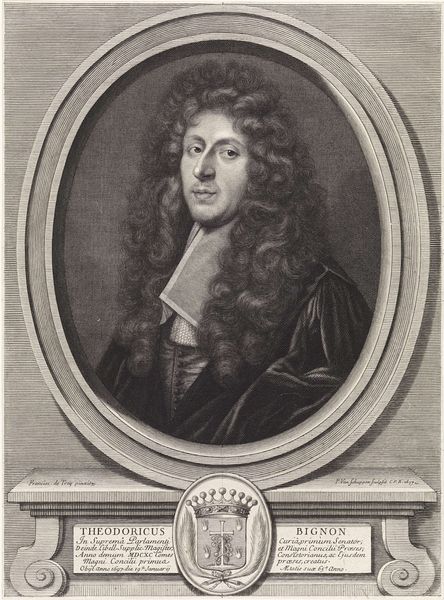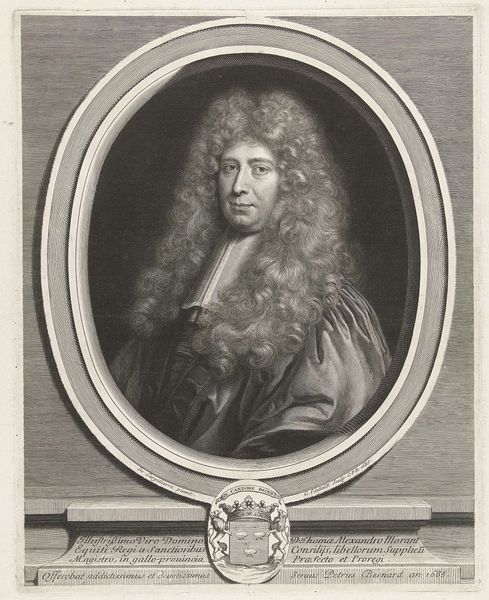
print, engraving
#
portrait
#
baroque
# print
#
old engraving style
#
historical photography
#
19th century
#
engraving
Dimensions: height 250 mm, width 191 mm
Copyright: Rijks Museum: Open Domain
Curator: The Rijksmuseum proudly presents "Portrait of Philippe Quinault," an engraving conceived between 1666 and 1707, masterfully etched by Gérard Edelinck. It's a striking example of Baroque portraiture. Editor: My initial response is one of formality and power; this is very much an image carefully curated for a specific kind of consumption, but in a way it seems to carry more than the sitter. Curator: Edelinck's engraving beautifully encapsulates Quinault’s position as a dramatist, auditor and member of the Académie Française during the reign of Louis XIV. To contextualize, Philippe Quinault wrote the librettos for several of Jean-Baptiste Lully’s operas, a partnership crucial in establishing French opera as its own distinctive art form. How might that relationship to power through music, have played out in society? Editor: Absolutely. The composition itself—the ornate frame, the flowing wig, the robe and coat of the sitter—speaks volumes about status and privilege. Beyond that though, I see an intentional cultivation of persona. In other words, if we recognize the baroque, can we recognize the performativity of it too? Curator: I agree. The swirling lines of the Baroque style do offer a sense of the dramatic, so how does it engage in our modern ideas of celebrity, particularly when juxtaposed with his other role of "Auditeur des Comptes"? Editor: Exactly! He is portrayed in the center as powerful, yet approachable and maybe there's more that is performative to this engraving. This goes beyond mere likeness and intersects with the politics of identity and the control of representation. His expression and relaxed posture contribute to a narrative of erudition and a relaxed confidence, further underlining his position as someone to be admired and respected. I think it reveals the era’s desire to present powerful figures with humanity. The very deliberate composition serves specific goals in establishing an image of power for its patron or intended consumer, more than just Quinault himself. Curator: This piece speaks not just about individual identity, but about the construction of societal roles and influence in 17th century France, and how that performance echoes into contemporary views. Editor: Indeed. Examining art through the lens of social and cultural history reveals how imagery is wielded to uphold systems of power, prompting us to reflect on its enduring impact.
Comments
No comments
Be the first to comment and join the conversation on the ultimate creative platform.
